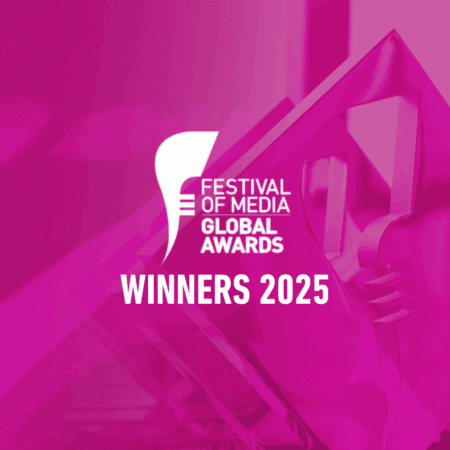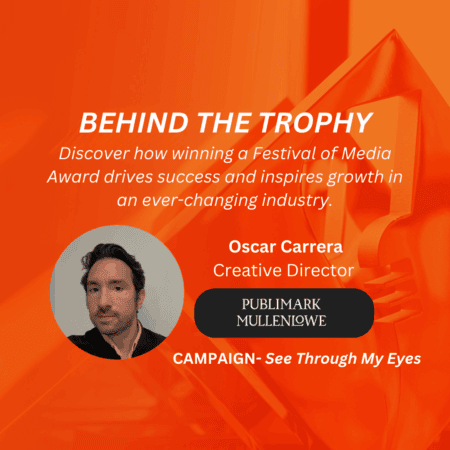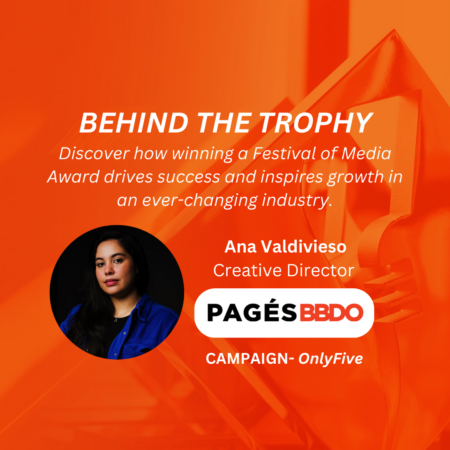We sat down with our one of our judges, Bart Van De Vel, Sr Client Partner, Global Brand, Snap to discuss all things media and he revealed the one thing he would like to get rid of in the industry is this notion you can achieve marketing greatness on a shoestring budget simply because we have social media and digital platforms. He explained further that it’s the marketing equivalent of thinking you can get a six-pack by doing one sit-up a day and scrolling through fitness Instagram.

Here are the answers to the five quick fire questions we posed to him:
What campaign have you been most impressed with over the last 12 months?
My standout campaign of 2024 has been Hellmann’s refreshed approach to marketing. While it’s not a single campaign, their cohesive strategy throughout the year has been impressive. From their humorous Super Bowl ad addressing food waste with Kate McKinnon and ‘Mayo Cat’, to the playful ‘Will Levis No8 Parfum de Mayonnaise’ featuring NFL quarterback Will Levis, Hellmann’s has consistently delivered creative and memorable content.
What impresses me most is how they’ve managed to blend humor with purpose. Their ongoing ‘Make Taste, Not Waste’ initiative shows a genuine commitment to addressing food waste, a significant environmental issue. By using the Super Bowl platform – the second most wasteful food day of the year – they’ve cleverly maximized their impact.
Moreover, their ability to stay culturally relevant, whether by tapping into Levis’s viral moment of adding mayo to coffee or by continuing their streak of star-studded Super Bowl ads, demonstrates a keen understanding of how to capture and maintain public attention.
This approach has not only boosted their brand image but also helped them connect with younger consumers without alienating their existing base. It’s a masterclass in how a legacy brand can evolve and stay relevant while maintaining its core identity and values.
What category are you most looking forward to judging at the Festival of Media North America Awards this year?
You might expect me to say I’m most excited about judging the Best Use of Social Media category, given that’s where my day-to-day expertise lies as someone working at Snap. However, I’m particularly keen on the ROI Award. I’m a strong advocate for effectiveness in what we do. Too often, we get caught up in vanity metrics or lose sight of our true purpose. At its core, advertising and media are about growing businesses, and that’s why this category is my favorite.
The ROI Award challenges us to look beyond surface-level engagement and focus on meaningful growth over a two-year period. It pushes us to consider brand performance measurement, key growth metrics, and the overall effect on the bottom line. This holistic view of success is crucial in our industry.
That said, I believe the most important category this year is probably the Inclusive Campaign of the Year. With DEI initiatives being challenged from all sides, yet our consumer base becoming more diverse than ever, we can’t afford to lose sight of our responsibility as advertisers. We have a powerful voice, and it’s our duty to use it for good by championing inclusivity.
This category not only celebrates creativity and effectiveness but also recognizes the crucial role media can play in shaping societal attitudes. It reminds us that our work can and should contribute to a more inclusive world.
In essence, while ROI keeps us accountable to business objectives, the Inclusive Campaign category keeps us accountable to our broader social responsibilities. Both are vital for the future of our industry.
If you change one thing in media what would it be?
If I could change one thing in media, it would be to dial back our collective enthusiasm for jargon and abbreviations. This year, we’ve seen a flood of terms like CAPI, SKOverlay, and SKAN. It’s as if we’re all participants in an industry-wide game of alphabet bingo, and sometimes I wonder if even we know what we’re talking about.
We’ve gotten so comfortable with these terms that we often forget how they sound to outsiders. Imagine trying to explain SKAN at a family dinner – you’d likely be met with blank stares and polite nods as your relatives wonder if you’ve started speaking in code.
The funny thing is, we’re often genuinely surprised when someone admits they don’t understand our alphabet soup. It’s a reminder that not everyone spends their free time decoding the latest marketing acronyms.
Don’t get me wrong – these terms often represent important concepts and technologies. But when a meeting starts to sound like a top-secret briefing, it might be time to take a step back and remember the value of clear communication.
Maybe we could challenge ourselves to explain things in simpler terms. Not only might it help us connect better with clients and colleagues, but it could also lead to fresher, more accessible ideas.
In the meantime, I’ll be working on my new app: the Ad Tech Jargon Translator. It’ll convert our industry speak into plain English. I’m thinking of calling it ATJT. No, wait…
What is the biggest challenge you face in your current role?
The biggest challenge I face in my day-to-day job is also, paradoxically, what keeps me passionate about this industry: its relentless pace of change. We’re constantly navigating new platforms, emerging technologies, evolving business models, and shifting team dynamics. Not to mention the ever-changing landscape of consumer behavior and preferences.
It’s like trying to solve a Rubik’s cube while riding a roller coaster – exhilarating, but occasionally nauseating. Just when you think you’ve got it figured out, someone throws in a new color or adds an extra dimension.
This perpetual state of flux can be overwhelming at times. There are days when I feel like I need a time-turner just to keep up with the latest trends and updates. It’s a challenge to stay on top of it all while still delivering results for our clients and teams.
But here’s the kicker – this constant evolution is precisely what energizes me. It’s what gets me out of bed in the morning (well, that and a strong cup of coffee). The thrill of adapting to new challenges, the excitement of exploring uncharted territories in the digital landscape – it’s addictive.
And despite all the changes, there’s a comforting constant: the underlying principles of success remain the same. Creativity, strategic thinking, and understanding human behavior are still at the core of what we do. It’s like we’re playing the same game, just with ever-changing rules and fancy new equipment.
So yes, keeping up is my biggest challenge. But it’s also why, after all these years, I’m still in love with what I do. It keeps me on my toes, forces me to grow, and ensures that no two days are ever the same. In this industry, the only constant is change – and that’s exactly how I like it.
What would you like to get rid of in media?
If I could get rid of one thing in media, it would be the misguided belief that the internet has made successful advertising cheap or even free.
This notion that you can achieve marketing greatness on a shoestring budget simply because we have social media and digital platforms is as persistent as it is problematic. It’s the marketing equivalent of thinking you can get a six-pack by doing one sit-up a day and scrolling through fitness Instagram. Or it’s like thinking you can win a Formula 1 race with a souped-up golf cart just because you have access to a racetrack.
Don’t get me wrong, the internet has democratized access to advertising channels, and that’s fantastic. But successful advertising still requires significant investment – not just in media spend, but in strategy, creativity, and consistent effort. It’s like thinking you can become a chess grandmaster just because you downloaded a chess app. The tools are more accessible, sure, but mastery still takes time, effort, and yes, money.
I’m a big believer in the science-based approaches of Byron Sharp and Mark Ritson. Their work shows that to thrive, businesses need to make marketing and advertising core priorities and invest accordingly. It’s not about throwing money at the wall and seeing what sticks, but about smart, strategic investment based on solid principles.
The internet hasn’t made great advertising free; it’s just changed the playing field. We’re no longer limited to TV spots and billboard ads, but the fundamental need for investment remains. It’s like upgrading from a flip phone to a smartphone – you have more capabilities, but you still need to pay the bill and learn how to use it effectively.
So if I could wave a magic wand, I’d erase this ‘cheap and easy’ myth from our collective consciousness. Maybe then we could focus on what really drives success: understanding core advertising principles, prioritizing marketing efforts, and being willing to invest in them. After all, in advertising, as in life, you often get what you pay for.
There is still time to enter the Festival of Media North America Awards here


